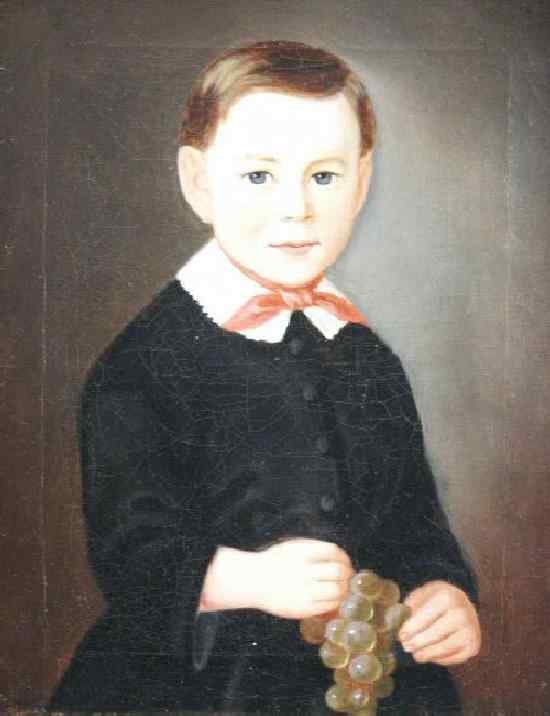
Unknown Biedermeier Artists

Figure 1.--A E-bay seller attributes this to a German Biedermeier artist. Ee are not positive about this, but it dies look to have been done about the 1840s. It was done, by a competent, but not brillant artists. The boy's plain suit and grey background suggests that he did inexpensive porteaits turned out as quickly as possible.
|
We have archieved some unknown artists who have been described as painting in the Biedermeier style. We suspect in some cases, some unidentified portraits are attributed to the Biedermeier style to enhance their value.
Biedermeier Style
Biedermeier is a period of Austrian-German art history from the end of the Napoleonic Era (1815) to the mid-century 1848 Revolutions. Some of the best known Biedermeier artists are Jacob von Alt and Carl Spitzweg. The Biedermeier style is characterized by by simplicity and elegance. It is most strongly associated with furniture making and art. Others have extenbded it to music as well, such as the elegant work of Ludwig van
Beethoven and Franz Schubert. Art historianns believe that the Biedermeier style had a major influence on the Jugendstil / Art Nouveau, the Bauhaus, and 20th century art. I had thought there was an artist and cabinent maker named Biedermeier. A art historian, however, writes, "There was no Mr. Biedermeier who helped create or produce the new style. In fact the term "Biedermeier" was not even used when the designs first began It didn't
appear until after the Vormarz period, about 1850. It really began as a disparaging label by German intellectuals who looked upon the Vormarz period as one of little
emotion, as a passive period. In 1853, a doctor and a district judge began writing satire in the form of verses under the pen name, Gottlieb Biedermeier. "Gottlieb"
means God-loving and Maier" is a very common German surname. The satire was about upright citizens who led simple but unquestioning lives. Later, the early 19th
century became known as the era of the Biedermeier - the simple bourgeoisie (middle class). The intent was to make light of the reoccupation with respectability and
material values for which the middle class had become known." [Howell]
Portrait of a Boy
This portrait was painted in the mid-19th century (figure 1). The artist is unknown, but the E-bay seller attributes it to a German Biedermeyer artist. He describes the portrait as, "The painting represents a brilliant portrait of a little boy dressed in a black blouse with a white collar and a read scarf around his neck. A brilliant empire portrait with a splendid color variety, many details, a fine characterization of the head and face, and an eminent light." I'm not sure why he describes the portrait as both Biedermeier and Empire, but it does look to be a mid-century painting. I'm not positive, however, that it is a German portrait. It was done, by a competent, but not brillant artists. The boy's plain suit and grey background suggests that he did inexpensive porteaits turned out as quickly as possible. It is not clear just what this boy isearing, but it looks to be a dress.
Sources
Howell, Nancy. "The Biedermeier Era. Who Was Biedermeier?".
HBC

Navigate the Boys' Historical Clothing artistic pages:
[Return to the Main artistic page]
[Return to the Main Austrian page]
[Return to the Main German page]
[Chronologies]
[Individuals]
[National]
[Styles]
Navigate the Boys' Historical Clothing Web Site:
[Introduction]
[Activities]
[Biographies]
[Chronology]
[Clothing styles]
[Countries]
[Bibliographies]
[Contributions]
[FAQs]
[Glossaries]
[Satellite sites]
[Boys' Clothing Home]
Created: September 15, 2003
Last updated: September 15, 2003



